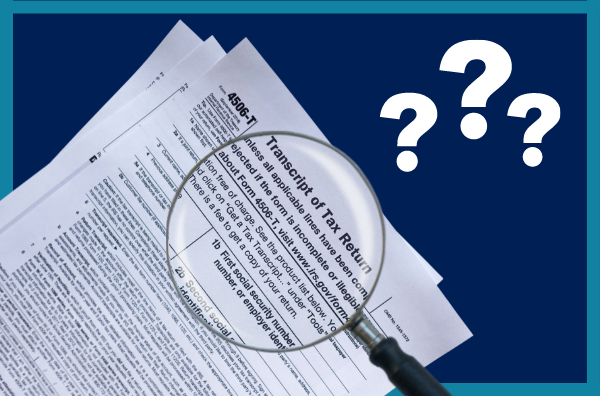Tax season can be a daunting time for many, filled with complex forms and unfamiliar terminology. One crucial document that often causes confusion is the tax transcript. This vital record, provided by the Internal Revenue Service (IRS), offers a comprehensive overview of your tax history. However, misunderstanding or misusing your tax transcript can lead to serious consequences. In this blog, we’ll explore common tax transcript mistakes and provide practical tips to help you navigate this essential document with confidence.
What is a Tax Transcript?
Before diving into common errors, let’s clarify what a tax transcript actually is. A tax transcript is an official summary of your tax return information, including your income, tax payments, and other key details. The IRS offers several types of transcripts, each serving different purposes. Understanding which type you need is the first step in avoiding potential mistakes.
Mistake #1: Requesting the Wrong Type of Transcript
One of the most frequent errors is requesting an incorrect transcript type. The IRS provides five different transcripts: Tax Return Transcript, Tax Account Transcript, Record of Account Transcript, Wage and Income Transcript, and Verification of Non-filing Letter. Each serves a specific purpose, and choosing the wrong one can lead to delays or incomplete information.
To avoid this mistake, carefully consider why you need the transcript. For example, if you’re applying for a mortgage and need to verify your income, a Tax Return Transcript is usually sufficient. However, if you need to confirm specific payments or adjustments made to your account, a Tax Account Transcript might be more appropriate.
Mistake #2: Misreading Transcript Codes
Tax transcripts are filled with numeric codes that represent various pieces of information. These codes can be confusing for those unfamiliar with IRS terminology. Misinterpreting these codes can lead to incorrect assumptions about your tax status or financial situation.
To overcome this challenge, use the IRS’s official resources to decode these numbers. The IRS provides a comprehensive guide to transcript codes on their website. When in doubt, don’t hesitate to consult a tax professional who can help you interpret the information correctly.
Mistake #3: Overlooking Discrepancies
Your tax transcript should align with your personal records, but discrepancies can occur. Some taxpayers make the mistake of assuming the IRS transcript is always correct, without cross-checking against their own documentation. This oversight can lead to unnoticed errors in your tax filings or missed opportunities for corrections.
Mistake #4: Ignoring Security Precautions
In an age of increasing digital fraud, protecting your personal information is crucial. Some individuals make the mistake of being careless with their tax transcripts, which contain sensitive financial data. Failing to safeguard this information can expose you to identity theft or financial fraud.
To protect yourself, always use secure methods when requesting and viewing your transcript. The IRS offers online access through their secure portal, which is generally safer than mail delivery. If you must share your transcript with a third party, such as a lender, ensure you’re using secure transmission methods and only sharing with trusted entities.
Mistake #5: Failing to Keep Transcripts Updated
Tax situations can change from year to year, and so can the information on your transcript. A common oversight is relying on outdated transcript information when making financial decisions or filing future returns. This can lead to inaccuracies in your current filings or misinformed financial planning.
To avoid this, make it a practice to request updated transcripts regularly, especially before major financial decisions or at the start of each tax season. This ensures you’re working with the most current information available.
Your tax transcript is more than just a record of past transactions—it’s a valuable tool for understanding your financial history and planning for the future. By avoiding these common mistakes and approaching your transcript with care and attention to detail, you can make the most of this essential document. Remember, when in doubt, don’t hesitate to seek guidance from a qualified tax professional. With the right approach, your tax transcript can become a powerful ally in your financial journey.

